
Photos: IndyCar
Alex Palou was tipped as the next Fernando Alonso, with a stunning start to his car racing career at a young age. Rather than Formula 1 though, he’s found success in Super Formula and is now aiming for IndyCar glory
This story starts off in rural Catalonia, where a child going to school for the first time spots a karting track on the journey there and back. After a while, a visit is inevitably made. Being too small to reach the pedals, it takes a while longer before this child finds a kart of their own that fits and starts entering local and eventually national competitions.
National champion in the smaller Alevin class by the age of nine, a young Alex Palou is European champion in the junior KF3 karts by the age of 15 and is considered a hero at the time by one of his future Formula 3 team-mates. While considered an underdog threat, the Spaniard was a factory driver for world championship-winning manufacturer CRG.
“I was in karts, I was already a factory driver which is like the best thing you can do if you are a karter. So I could live from karting, and I was happy there, but [one day] Adrian Campos came to me, gave me a test in a Formula 3, and then gave me a contract,” Palou explains to Formula Scout.
“He was the only one in Spain taking a guy from karts and putting him into single-seaters. I think he was doing it when he was younger, then his son Adrian Campos Jr helped him, and he was the guy who was talking to his dad about me when I was in karting. Because he wanted to recreate what they did like 15 years ago [taking Fernando Alonso from karts to single-seaters] and I think it worked out pretty well.”
Palou’s move was confirmed late, and he was still karting when he was whisked to Euroformula’s Winter Series in February 2014. He qualified 0.151 seconds off pole first time out, and finished sixth after a slow start. Shortly after, Campos signed him for the full Euroformula season – which began with pole, victory and fastest lap on his Nurburgring debut.

Photo: FOTOSPEEDY
“We knew that I was super quick and that we had a really good car, so we already expected to be up there at some point. Maybe not on the first race, doing pole, winning and fastest lap.
“From that point we tried to fight for the title. We couldn’t, we struggled on the mid-season – there was some guys that was faster than us, there was a particular team that was like super-fast. But we were trying, and we won some races, we did lots of podiums, and we finished in third, which wasn’t a bad result.”
Palou’s first year in cars certainly turned heads, in the same way Alonso did in 1998 and Campos’s latest protege David Vidales is doing now, and he claimed two more poles and wins while his team-mates fought for fifth places at best.
As part of a three-year plan, Palou stepped up to GP3 with Campos and ended his rookie season with a win to finish 10th in the points. While his average qualifying position was sixth, he couldn’t match that position in the races in the first half of the year, and only twice surpassed it in the second half before his season-ending win.
GP3 introduced a new car for 2016, and Palou says Campos couldn’t “fix the balance” of the new machine. His qualifying average dipped to 13.5, and he scored less than half of his 2015 tally to finish 15th in the points.
“[Campos] wanted to support me and to help me to continue progressing, but there was not a lot of sponsors at that moment, it was hard. So it was pretty much coming from his pocket, and of the team – what that means is that you have a three-car team but receiving money from two cars only. That’s why I think we struggled a bit more and he was always willing to help, but we couldn’t find ways. It didn’t make sense to do another year in GP3 and we couldn’t search, we couldn’t find the budget to do GP2. That’s why my only option was to go to Japanese F3, and that’s what we did.”
 While pundits have also pointed to Palou’s ability on harder compounds not translating to the unique demands of the Pirelli rubber of that era in GP3, Palou dismisses that idea. Despite that, his form certainly returned when he returned to the Dallara F312 car in Japan for 2017, and on the local Yokohama rubber.
While pundits have also pointed to Palou’s ability on harder compounds not translating to the unique demands of the Pirelli rubber of that era in GP3, Palou dismisses that idea. Despite that, his form certainly returned when he returned to the Dallara F312 car in Japan for 2017, and on the local Yokohama rubber.
“It’s a different culture so you learn so much, it’s a different style of racing, and I enjoyed a lot.
“But again there was some teams that were faster than us and we couldn’t really get them. We were a one-car team, so we did a really good job finishing third in the championship.”
Palou had also looked at graduating to Formula V8 3.5 that year as well as GP2/F2, but couldn’t find the budget. His pre-season efforts to find a seat were rewarded though, as mid-season he got “last-minute calls” to race in both without any prior experience of either car.
He claimed three poles out of six attempts – and a win – in his FV8 3.5 spell with Teo Martin Motorsport, and eighth place on his F2 debut with Campos meant he started second race in the series from the pole spot.
“Teo Martin tried to search a budget for us, but he couldn’t [pre-season], and as soon as he had need of another driver he called me. So he gave me another opportunity to continue my racing career. And that also gave me the opportunity to then go to F2. To show the teams that I was quick enough in a bigger car, and that we didn’t need like a year of getting up to speed to perform. Teo Martin was a big guy that helped me a lot to jump [start] again my career.”
After impressing in his two outings, Palou actually secured an option to race in F2 for 2018, but instead returned to F3 again in the FIA’s European championship. There were two reasons why, and one was because he already had a seat in Japan’s premier single-seater series Super Formula in the bag for 2019 off the back of his successful first year in the country.
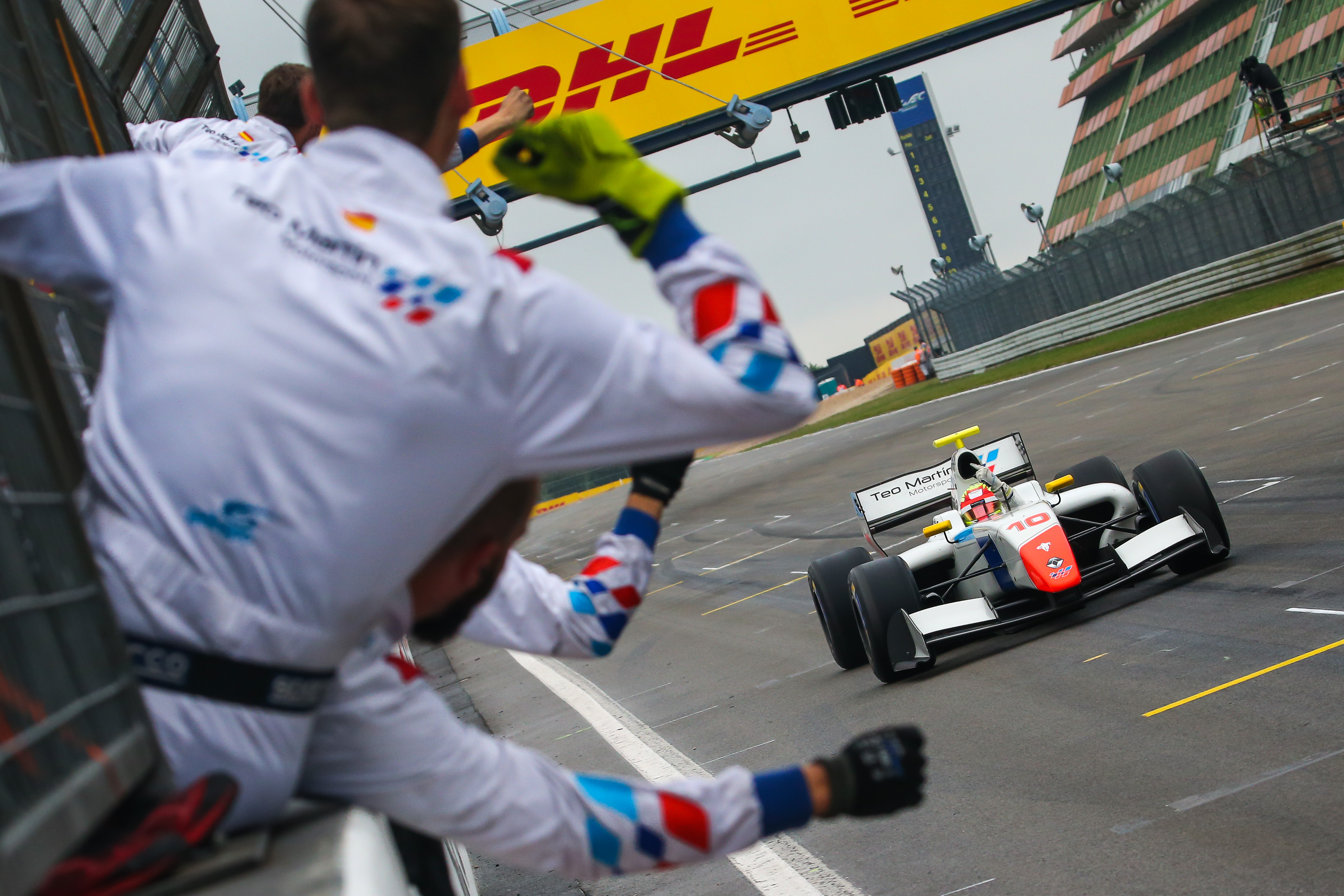 “F2, I think it’s a championship where you know the three teams that are going to win and fight for championships,” Palou explains.
“F2, I think it’s a championship where you know the three teams that are going to win and fight for championships,” Palou explains.
“And at that moment I needed something to [then] go back to Japan to have a seat in Super Formula and to try to make my racing career there before going to the US. I was not focused on F1 anymore, so F2 didn’t really make sense. I wanted track time, and I wanted testing, and F3 was the best option. So I decided to go with Hitech GP at that moment.”
Four front row starts and seven podiums, but no wins, translated to a lowly seventh in the standings but a happy Palou. His reasoning was with three races per weekend and “lots of testing” it was preparing him better for Super Formula than F2 would have, and the cost of the seat was being covered by team partner Bullfrog.
“So pretty much I had like a done deal after 2017 for ‘19, but not for ‘18 because they already had the drivers signed. So when I went to F3, I already knew that 2019 I could have a car in Super Formula.
“I wasn’t with the best team, so the idea was to get some good results to then go to a good team for this year. But it ended up much better than expected.”
The ultra-experienced line-up of Takuya Izawa and Narain Karthikeyan was swept out of Nakajima Racing for 2019, with 22-year-old Palou and 21-year-old F2 graduate Tadasuke Makino taking their places. In the previous five years with the Dallara SF14 chassis, the team scored just one podium, but those fortunes flipped with the introduction of the Dallara SF19.
“We had a new car, and that was the opposite thing that what I got in GP3,” says Palou. “I think the engineers did an amazing job. We didn’t really start pretty good in pre-season testing, but we found some stuff and we kept performing really well. I think I got three poles out of seven, which I think it couldn’t get better than that.”
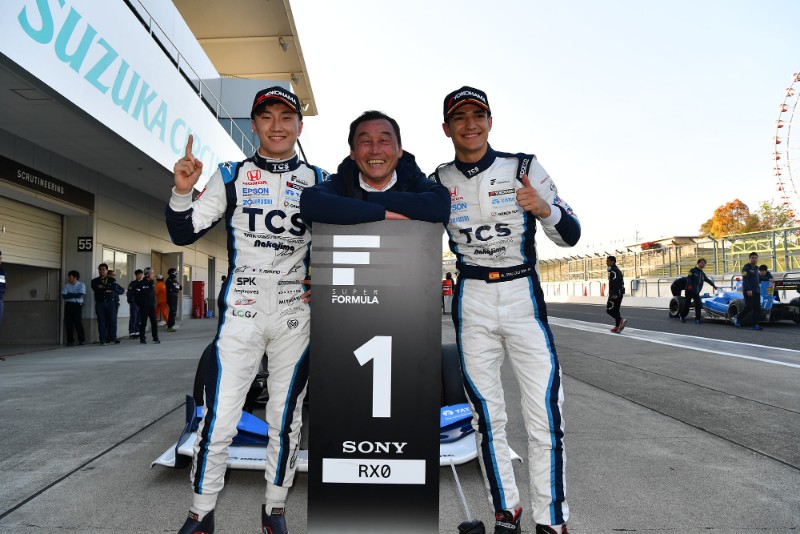 Makino pipped fellow debutant Palou to pole by 0.029s at the Suzuka season opener, the team’s first pole, since 2010, and both were on for at least podium finishes before their races were ended by freak wheel failures after their pitstops.
Makino pipped fellow debutant Palou to pole by 0.029s at the Suzuka season opener, the team’s first pole, since 2010, and both were on for at least podium finishes before their races were ended by freak wheel failures after their pitstops.
“I was P2 at that moment [behind yet-to-pit Kamui Kobayashi] when that happened. I think we could have won or at least finished on the podium that race. But anyway, things happen, and everybody had some mechanical failures,” Palou reflects.
“But then on the last race again I was P1 by far, and I got another mechanical failure at Suzuka. I think that wheel was more of a bad luck let’s say, because it was twice at the same track and I was already, I did my pitstop, I’d done the hard stuff, so I think it hurt me a lot more the last race, also because we were fighting for the title.”
Between the two Suzuka rounds, Palou had also taken pole at Fuji Speedway and Twin Ring Motegi. He absolutely blitzed the field at the former to win in pouring rain by over 13 seconds – one of the most dominant performances seen in the series in recent memory. Pole for the Suzuka season finale meant he was only three points behind going into the title decider.
“The first race the problem was the wheelnut, we have different wheel rims on SF that you can take, and the rims we had, they weren’t as safe as the other rims, that’s why we got [a failure] and other teams with the same rims got the same problem. Just because of the high downforce that the car had. Then on the last race we had another problem which was a brake duct that got stuck on the diffuser, and then we lost a lot of downforce and that’s why I went from like P1 to last.
“On last race the only thing I had to do to win the title was finish P1. We did the pole, I started on hard tyres and pitted for soft tyres. I was P1, I did my pitstop, and it was only about finishing the race in P1. You never know, because you can have a problem with two corners to go, but I’m pretty sure without that we could have won the title.
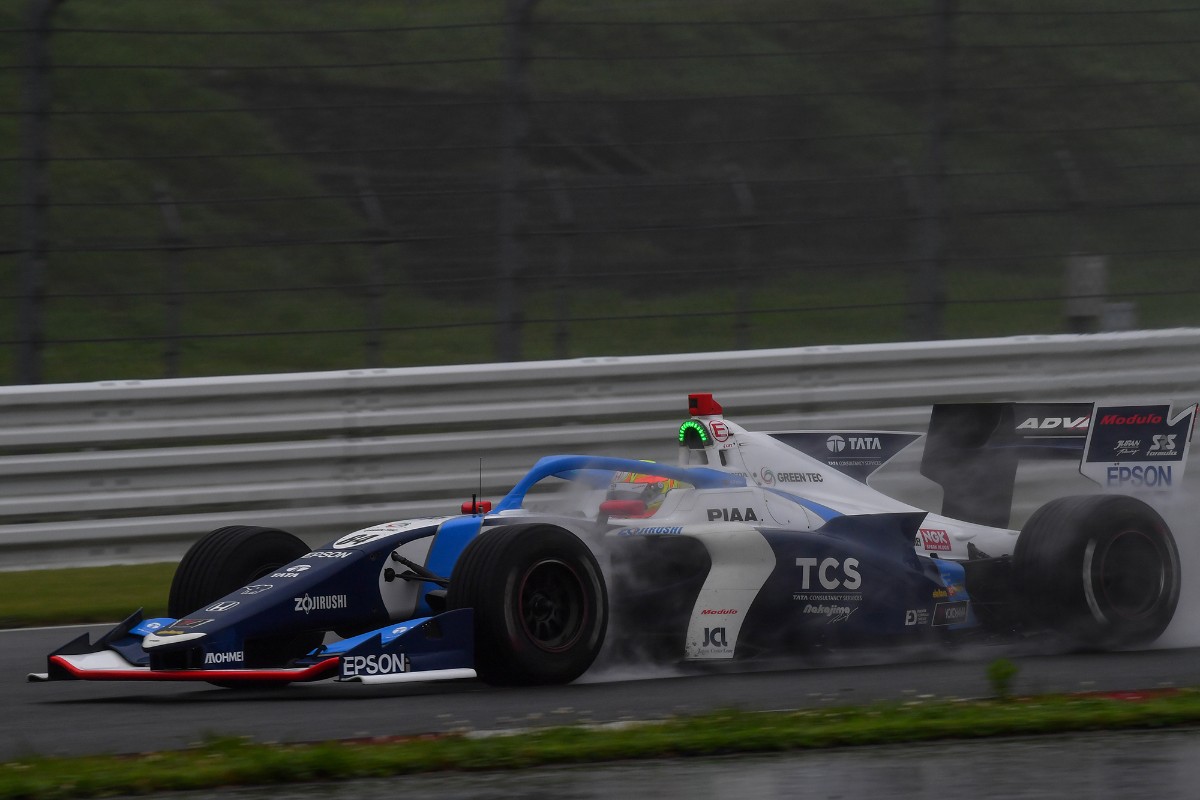 “Because I was super quick, we had such a good car that it was easy to drive. I think some drivers have some luck at some moments, some bad luck at some moments, at that moment we had some bad luck. But at the same time we had good luck because everybody saw that we were so quick that they gave me the opportunity to come here to America.”
“Because I was super quick, we had such a good car that it was easy to drive. I think some drivers have some luck at some moments, some bad luck at some moments, at that moment we had some bad luck. But at the same time we had good luck because everybody saw that we were so quick that they gave me the opportunity to come here to America.”
Rather than spend a second season in SF, with a paid Super GT drive to boot with Honda as well having used their engines at Nakajima Racing, Palou engineered a move to IndyCar for 2020 to once again be a rookie sensation.
“I had a car for Super GT and Super Formula, which is like super good in Japan. But I already was in contact with Dale Coyne Racing [in IndyCar], and I had to try it. I saw that it was 50% chance, so I was trying, trying, trying, and still talking to Honda; I think at the end they were happy and sad at the same time that I came here. They gave me the opportunity to be a professional race car driver and they kept the faith in me and they still support me now.
“It’s Honda that decides normally [who you race for in SF]. They normally ask you ‘what do you want, what do you need for next year?’, and I said ‘look, I don’t need anything for Super Formula, I actually want to stay with Nakajima and try to win the title’. Because we knew that the car was awesome, and was really good in every race, and me not being a rookie anymore and hopefully with no mechanical issues we would have fought for the title again this year.”
During 2019, Palou also raced a McLaren in Super GT300 for revived title-winning and Le Mans 24 Hours-winning outfit Team Goh. Once again it was a deal clinched after his first year in Japan.
A relationship built between driver and team, which was well aware of Palou’s IndyCar dream given he’d already shown his title-fighting capabilities in SF. As luck had it, Goh has sponsored DCR in 1990 and helped organise an IndyCar test for Palou. After the Spaniard showed well in that, Goh decided to relocate its racing efforts to where Palou was now headed.
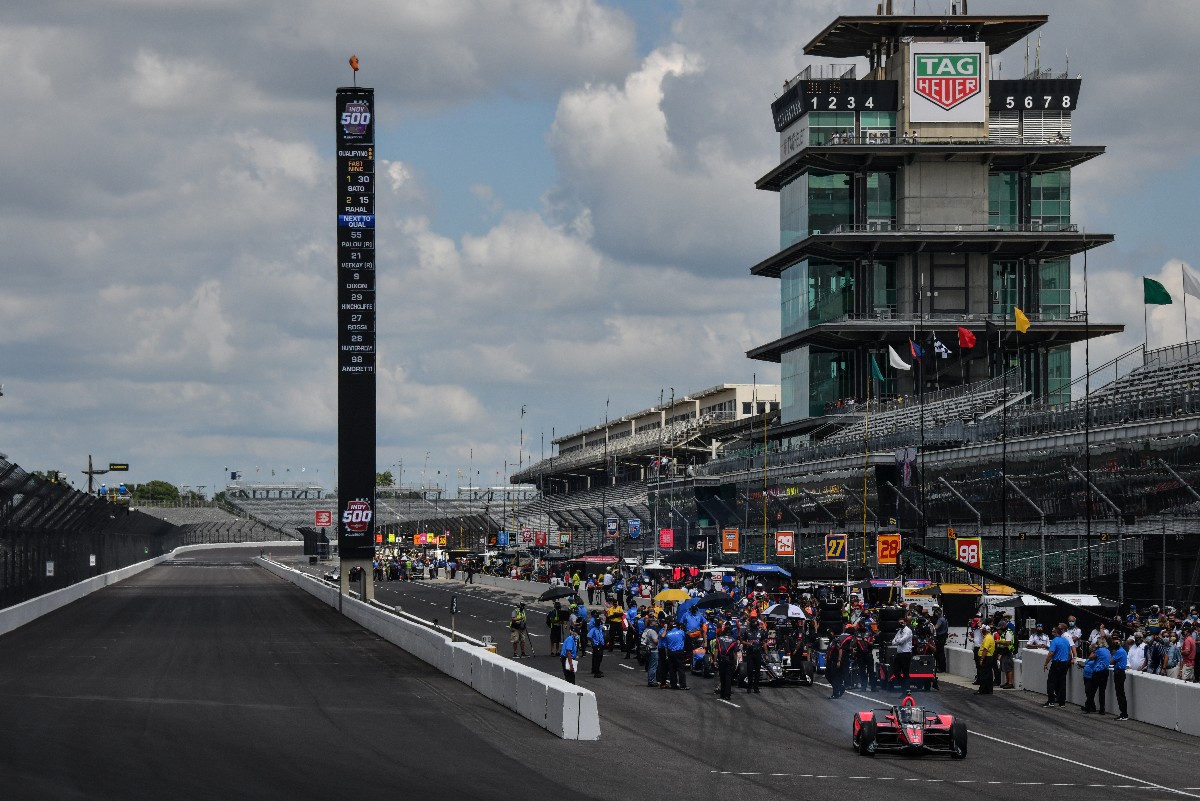 “[The support is] a bit of everything. My spotter is [former American-Japanese IndyCar driver] Roger Yasukawa, he was the manager last year at Team Goh. We’re receiving technical support as well.
“[The support is] a bit of everything. My spotter is [former American-Japanese IndyCar driver] Roger Yasukawa, he was the manager last year at Team Goh. We’re receiving technical support as well.
“Without Team Goh I wouldn’t be here, and without Honda I wouldn’t be here. Only with one, I wouldn’t be here. It’s everybody that made this possible, and it’s pretty crazy to think you have to go to Japan before coming here, and you build relationships there that are going to allow you to come here. I like it, I love it, and that means they were really happy with us, which is awesome. When a team or a group of people wants to stay with you again, it’s a nice feeling.”
Palou’s been a rookie sensation in almost everything else he’s competed in, so how has his 2020 IndyCar campaign fared?
He was on the podium by his third race, and qualified third for the one immediately after, claimed fastest lap on his fifth ever race on an oval after qualifying seventh for his first crack at the Indianapolis 500, but has been involved in clashes of his own (such as Indy) and others’ making that has left him 17th in the points – and trailing Ed Carpenter Racing’s Indy Lights graduate Rinus VeeKay in the fight for the rookie title – in such a highly competitive grid.
“It’s a different style of racing once again. And it takes time to really get into it and understand,” admits Palou, who repeatedly praises the arms-out style of racing in America.
“I think we had a pretty good year so far. Maybe worse than what we wanted, but better performance than we expected. We’ve been pretty quick everywhere, we just need to put all the pieces together and we’ll be up front for sure.”
Putting together a weekend has been harder in 2020 by COVID-19 reducing many IndyCar rounds to single-day events with a single free practice session. For example Palou qualified fourth last time out at Mid-Ohio, but was crashed out almost immediately in the race in an incident caused by DCR stablemate Santino Ferrucci.
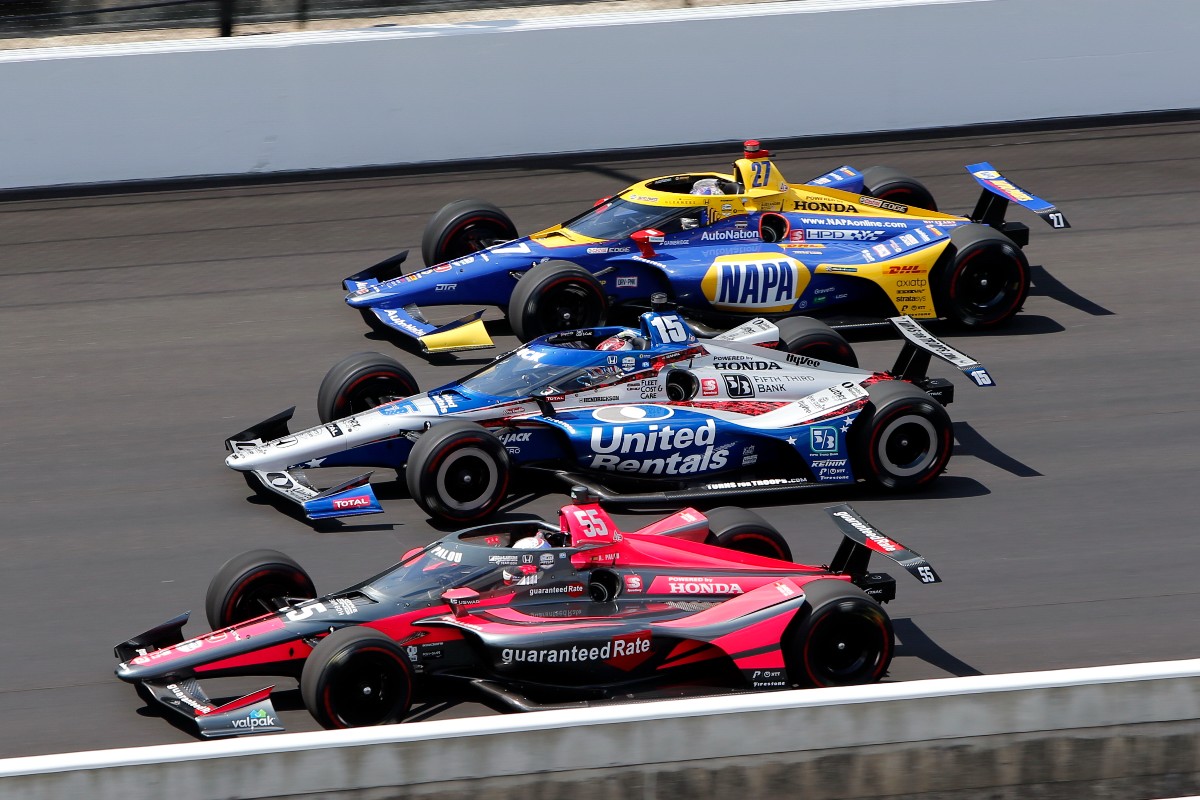 To aid his learning curve, Palou’s lent on the experience of Yasukawa, 1999 CART champion Juan Pablo Montoya and Spain’s only IndyCar race-winner Oriol Servia. While he has adapted quickly to ovals with that assistance, he admits oval results are ‘hurt a lot’ by his inexperience limiting his ability to contribute to strategy calls, whereas he can “read the race” on the road courses.
To aid his learning curve, Palou’s lent on the experience of Yasukawa, 1999 CART champion Juan Pablo Montoya and Spain’s only IndyCar race-winner Oriol Servia. While he has adapted quickly to ovals with that assistance, he admits oval results are ‘hurt a lot’ by his inexperience limiting his ability to contribute to strategy calls, whereas he can “read the race” on the road courses.
“It’s really different [to SF]. There is nothing that you can take over to go to Indycar. This car is so different to drive, but it’s awesome at the same time, I love it. There’s no power steering, the weight is really high just because it’s really safe for the oval courses, and it’s really powerful as well.”
This weekend’s races on the Indianapolis Motor Speedway road course mark the first time Palou is revisiting a track he knows, and he’s still rather optimistically aiming to bridge the 116-point gap to the top six in the standings in the three remaining rounds with the small team he drives for.
“But look, in Indy 500 which is the most important race, DCR gave me such a good car that I was fighting for pole, which is like ‘Man, not everybody gets that opportunity’. And I got it. And I got it with a really small team. So I’m super happy, and I just want to continue racing in IndyCar,” he states.
Any more strong results will assist in a “tough” effort to raise the budget to be back on the IndyCar grid next year for DCR with Team Goh, which is, kind of, where Palou’s headline-grabbing barista abilities come in.
During lockdown earlier this year he was based in Spain, where he owns a coffee shop with his girlfriend and spent some of his time working when the most stringent of restrictions were relaxed and he was waiting to make his IndyCar debut.
“It’s pretty much my girlfriend that runs it. We own it together, but it’s my girlfriend that runs it. And yeah, sometimes they need a hand as well [serving coffee].
“I tell everybody [in IndyCar] to go there, and to spend as much money as possible in our coffee shop! Obviously it’s hard, and it’s working pretty well. Again the pandemic is not helping, but we’ll make it happen.”
Palou is keeping his business interests and relationships in Japan going, as well as his links to the Monaco Increase Management company that has declared aims of creating a new F1 team with Palou in the driver’s seat, knowing that the crucial boost to get his 2021 budget over the line could come from any part of his career so far.
